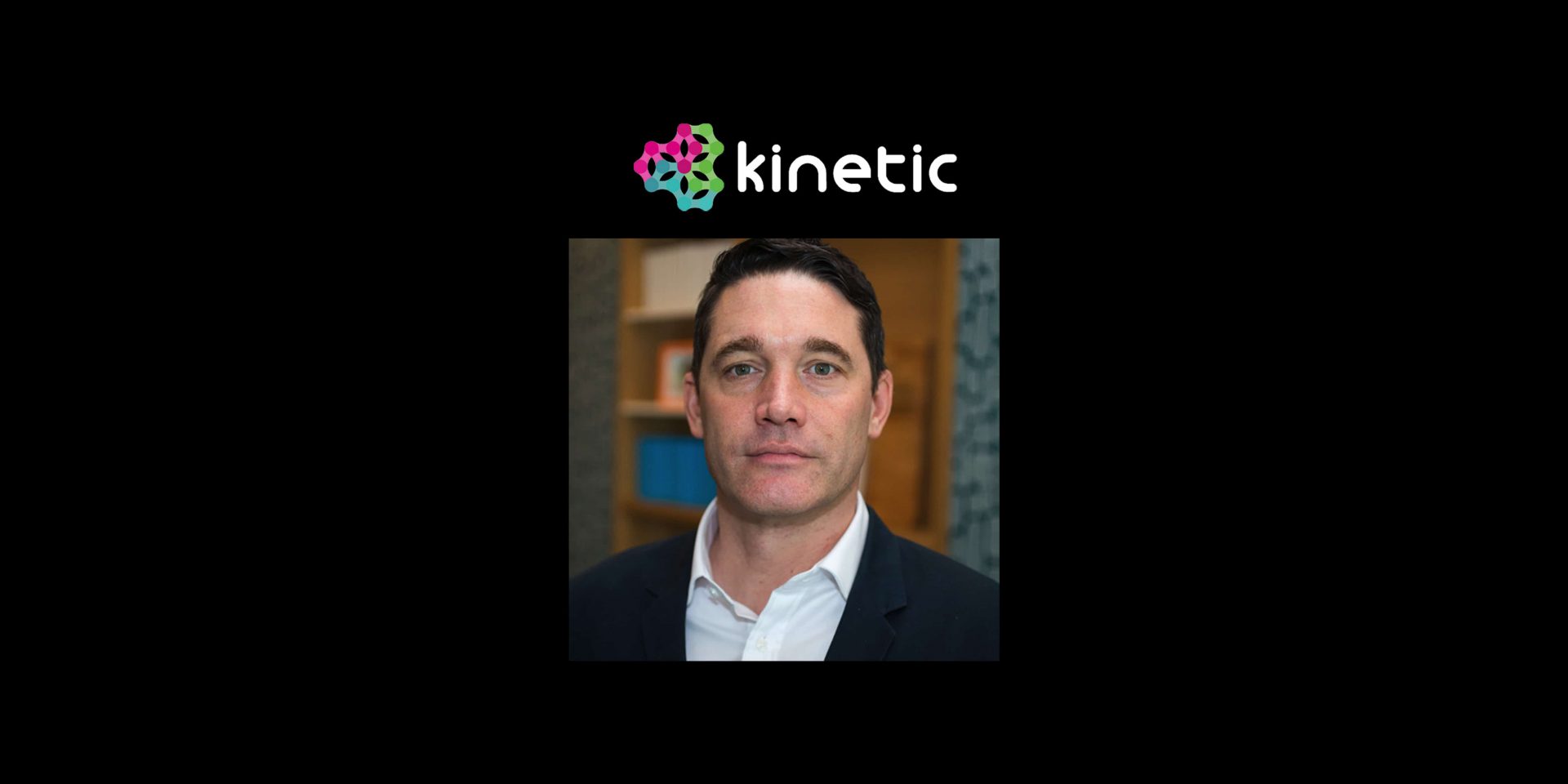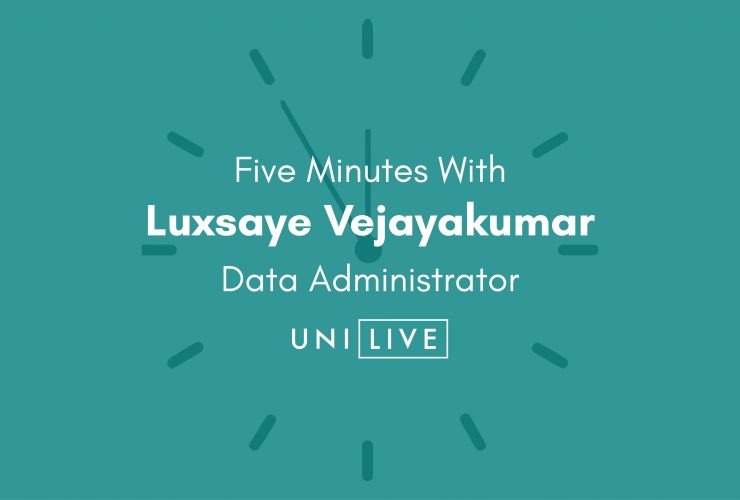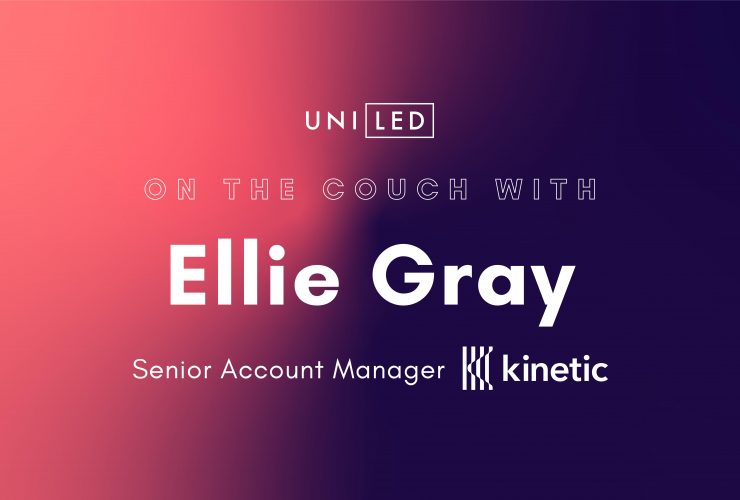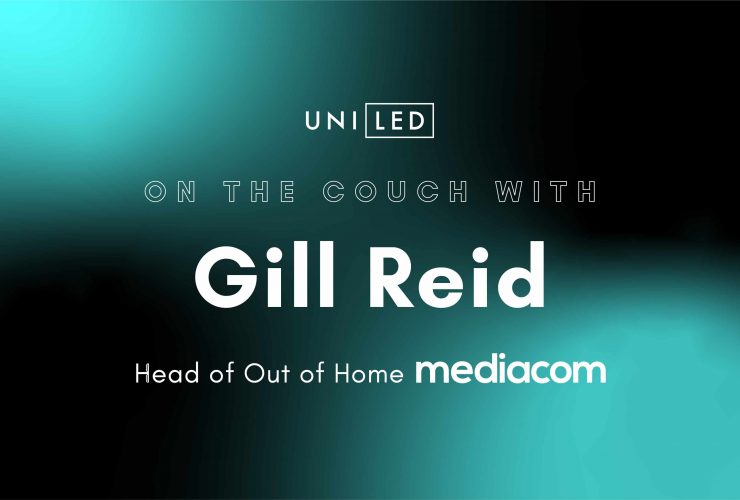UniLED’s CEO Ben Zloof, speaks to Alistair MacCallum, CEO of media specialist Kinetic, about the growth of digital out-of-home, how OOH will be bought similar to AV campaigns, the importance of transparency in the industry and the future of the OOH Specialist.
How has the importance of digital out of home risen?
At the start of 2020, digital out-of-home, was already rising to over 50% in terms of revenue, but over the last year we have seen clients utilising the flexibility that DOOH provides, and so it has risen at a faster pace than it would have done without Covid-19.
The ability to access OOH inventory within very short time frames has seen clients being able to respond to what is happening in the wider landscape. Whether that is keeping customers informed, by being able to adapt messaging to what is happening, or to plan around certain areas where there may be local restrictions. OOH is now much smarter and more adaptable than it was historically.
‘OOH was in a great place going into the pandemic and through it there has been a real acceleration.’
Our Journeys platform uses mobile, digital, and offline data sets to find behavioural audiences and then identify the key times and locations to reach them. We then overlay that with mobile transactional data sets to model behaviours and identify key locations and times of day to reach audiences. So, within that, the desire to leverage what DOOH can offer has also risen exponentially.
OOH was in a great place going into the pandemic and through it, there has been a real acceleration in what we are now capable of doing, and we are seeing clients tap into that.
What is the future for classic paper and paste billboards in the UK?
Clients still see the value of classic billboards and the reach they deliver, and longer-term brand messaging is still important to brands like Nationwide. There are still many classic formats and therefore interesting things that can be done with that classic inventory.
Digital will never reach all the locations that classic can, certainly not within the next 10 years. I see the future being about how we use both classic and digital together, but client appetite is increasing to digital out of home, and from what we see from our partners, they are committed to investing in more digital inventory.
You recently announced your partnership with Hivestack. How do you see the blend of traditional automated, and automated guaranteed in real-time buying changing over time?
There has been a lot of discussion and hyperbole about programmatic OOH, and the future I believe will be similar to the TV/AV sector. When I came into the industry, one of the things I was most excited about was that I felt OOH was the last big media channel to go through real transformation. I believe the future we will see, when we are planning campaigns for clients, is similar to how AV campaigns are now put together. They are a combination of classic linear TV, which still has a huge role to play, combined with smarter audience targeting via VOD, with potentially 1-1 communications via Addressable TV.
If we flip that into OOH, classic geo-location-based campaigns still have a real role to play in terms of delivering reach, but we then have smarter behavioural targeting that can be deployed. For example our Journeys platform allows us to be much smarter about how we reach audiences in key times and locations, which also has a huge role to play.
We then have a healthy automated real-time trading eco-system that can drive forward the ambitions of OOH in deployment, helping to excite clients about the new possibilities that are there for engaging with audiences in this way.
I believe the future is a blended one, but we need to be careful not to get too obsessive about the role programmatic can play. It has a huge role to play, particularly when we talk about context, for example time of day or weather triggered campaigns, but it will, for the foreseeable future, be a relatively small percentage of overall buys.
It will grow very fast this year, and it is why we’re excited about our partnership with Hivestack, a DSP that has been developed specifically for OOH. We are going to see a very different way of planning OOH going forward.
‘Our challenge will be how we make OOH easier to plan and buy, and I believe automation and technology play a huge role within that.’
Our challenge will be how we make OOH easier to plan and buy, and I believe automation and technology play a huge role within that. As more digital inventory becomes available, the more media owners invest in the infrastructure, the scope for buying OOH in a different way from how it has historically been done is just going to grow.
There’s a huge focus on transparency, brand safety and accountability in the digital online world, what is the DOOH market doing to address these issues?
We have an inherent advantage that OOH, by its very nature, is brand safe. When you say something out of home, you must be saying something that is true and you can stand by, because you are doing it in a very public way. So, we do not necessarily have some of the same brand safety challenges that particularly pure-play digitals have.
But from a transparency and accountability perspective, we are implementing more automation of processes, which does not just reduce human error, but also allows for more accurate reporting of delivery. OOH, in terms of verification of posting and delivery of campaigns, has been a bit behind other channels in its sophistication.
However, we can now traffic creative assets and independently verify through the systems and partnerships we have, to be able to report digital out of home plays and the impacts delivered. Like the programmatic space, the quality and scale of what platforms there are is increasing. We are now at a point where clients are also starting to see the value of these tools.
With client budget pressures continuing – will accountability be more important?
Yes, and it will make the role of the channel even stronger. If we have more proof points and accountability, but also the effectiveness that comes on the back of that, and we can look at the correlation of audience exposure to OOH and online behaviour, it builds the case for OOH to be seen as an activation channel as much as a brand-building channel.
There is a lack of awareness and understanding of what can be done now and there is nervousness around additional costs to invest in the technology. Our role is to show clients the value that it delivers to them, to the point that it becomes indispensable, which it will do. As tools improve, as we get to an even better place, the value rises for clients.
Out-of-home media specialists bring value to advertisers, not only through their buying scale, but also through the application of intelligent data and knowledge for more effective placements – where do you see their role in continuing to drive the medium forward?
I come from a full-service media agency background, and there has always been a question around what is the future of specialists? Specialists were always valued because of the trading strength they brought, their expertise and understanding of what is a very complex marketplace. For me it has been a real learning curve, to see how many components there are to delivering an outdoor campaign.
Whether that is in the granularity of planning, the buying, the operations, production, despatch. Out of home is still a very physical media channel, despite the growth in automation and programmatic. Digital transformation has led to a real shift in the role of the specialist, to how do we more effectively use intelligence, technology, creativity to help brands to communicate with valuable audiences? We move smart and fast to understand what real-life audience behaviours are and how people want to interact with the world around them. We now position ourselves as the audience location specialists, in the same way there are specialists in certain digital channels.
‘We now position ourselves as the audience location specialists, in the same way there are specialists in certain digital channels.’
If we continue to drive the medium towards what it should be, we will still always offer the value that comes from having the trading scale that Kinetic as number 1 in the market have, but leadership in OOH is no longer simply a function of that trading strength.
How we demonstrate value to clients is in how we can leverage the opportunities that exist now in OOH, something that I think it is still too complex and difficult to do as a single agency operation company.
What is a recent favourite DOOH activation that showcases some of the value we have been talking about?
Our first campaign, as part of our Hivestack partnership, was for M&S Food. We were able to use a 2-week lookback window to identify people who had been into an M&S food store, or their competitors, over the lunchtime period and then which panels those people have subsequently passed by in the day, so we could ensure we were continuing to use the right panels etc.
It was our first campaign through Hivestack, the first time Clear Channel’s inventory had been transacted via DSP, and it’s the first campaign that we are aware of that used dynamic creative optimisation on a campaign that had been transacted via DSP, which is the norm in pure-play digital, but is new for us. It uses data purposively, rather than just to activate against an audience, it has been transacted automatically via a DSP and it was optimised in campaign, using the dynamic creative possibilities that are out there.
Only 8-10% of digital out of home campaigns use dynamic creative, so there is still a role to educate creative agencies, as much as clients, on the possibilities that now exist.
‘A positive from Covid is that we saw some amazing campaigns that came from it…’
A positive from Covid is that we saw some amazing campaigns that came from it, such as KFC or McDonald’s welcoming people back, using dynamic creative to make their messaging really relevant, fast-paced and useful for people at a time when they are looking to understand what’s open and what they can do. The capabilities are still relatively in their infancy, but this year I think we will see a massive jump in these types of campaigns.
What’s the best out of home activation over the last 12 months you have seen, but had nothing to do with?
The Vodafone campaign that UniLED was involved in, that used buses and GPS data to trigger a message on the roadside screens when the buses passed was fantastic. Each time a Vodafone branded bus was in proximity to the screen, a Vodafone 5G message displayed. It’s a great example of cross-format innovation, a smart use of tech and it’s one of those that you look at and say ‘I wish we’d done it’.
The OOH industry needs to collaborate more, to be able to deliver more examples of fantastic use of technology, because it benefits us all. It is great to see in a market, that has been under a lot of pressure, and where businesses are under lots of pressure, that brands like Vodafone and M&S are seeing the value of innovation in terms of driving their business results forward.
Did you notice how often a digital screen featured in the news stories about the pandemic?
Out of home is probably the media channel that will be most remembered during that period for all the community messages, all the smart campaigns that, to a large extent, were designed to be shared across social. Last year we won a Mediaweek award with Dooh.com, our partners for the My Heroes campaign, which saw the public tweet messages of support to their friends and family who were keyworkers. They were able to get their messages up on screens and, even if they couldn’t physically see the screen, they could send images of the screen to their friends and family. It’s a great example of the acceleration of the great work in out-of-home.
And of course, no one will forget the Queen’s message on Piccadilly Circus!




